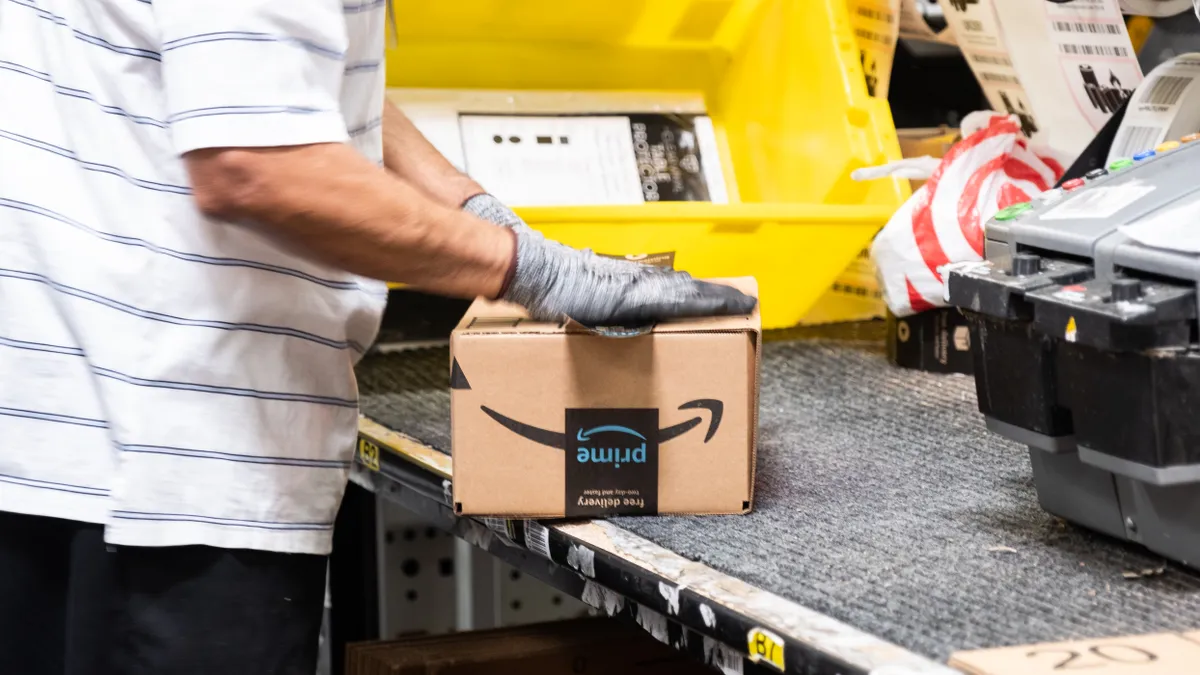Dive Brief:
-
Amazon eclipses Apple and Google as the No. 1 U.S. brand, with its worth rising 20% since last year to $334.6 billion — more than a third of a trillion dollars and the most of any in the history of the annual "Brand Z" database of the top 100 brands in the country from Kantar consulting group. Amazon the previous year ranked No. 3.
-
Apple this year is No. 2, worth $303.4 billion, and Google No. 3, worth $303.2 billion, according to research conducted by Kantar and communications firm WPP, which was emailed to Retail Dive. No other retailers landed in the top 10.
-
The 100 represent $3.81 trillion in value and are worth more than the GDP of Germany, the world's fourth largest economy, the researchers said. Retailers were the second most predominant group, following tech companies, with 11 brands, whose worth collectively rose 15% to $517 billion or 13.5% of the total, according to the report.
Dive Insight:
In this report, Amazon was designated a retailer while Apple was designated a tech company, though the two companies could be classified as both.
Brand Z researchers emphasize the role of innovation in propelling brands into their top 100 list. "Back in 2017, the high meaningful difference scores of this year's fastest risers gave us early signs of their future success," Reed Cundiff, CEO Kantar North America, said in a statement. "Today, they are defined by their difference, purpose and innovation credentials. These brands fulfill people's needs by innovating to create new categories and clearly delineating their offerings from those of their competitors."
Apple runs about 260 stores in the U.S. alone, while Amazon's retail operations remain largely online. While Amazon is listed in Brand Z as a retailer, its ability to constantly innovate in that market owes much to its tech side, namely the business-to-business AWS cloud services business, which sells services to entities as diverse as Netflix and the CIA, and which brought in $26 billion to its overall topline last year.
"The capacity Amazon is evaluated on is its consumer-facing offers — which is predominantly retail," a Kantar spokesperson explained to Retail Dive in an email. "AWS relates to the B2B side of the business, which consumers wouldn't have familiarity with. It is indeed a tech company, but tech is more the platform for delivering its retail offer on the consumer side."
In any case, while several brands, like Nike and Ralph Lauren, are minimizing their wholesale operations and growing their direct-to-consumer business through their own websites and stores, Amazon is moving in the other direction, increasingly relying on the third-party sellers in its Marketplace to stoke retail revenues.
Those revenues aren't just coming from customers purchasing goods, either. Even in its retail segment last year, for example, product sales were $142 billion, while sales of services (which include Marketplace seller fees, customer revenue from Prime memberships and add-ons like its paid music streaming) were $91 billion. And third-party sellers are moving more and more of the merchandise found at Amazon: When the Marketplace launched in 1999, those sellers had just 3% of the total share of physical gross merchandise sales sold on Amazon, while in 2018 that reached 58%. That's poised to grow, Amazon CEO Jeff Bezos hinted in his most recent letter to shareholders.












